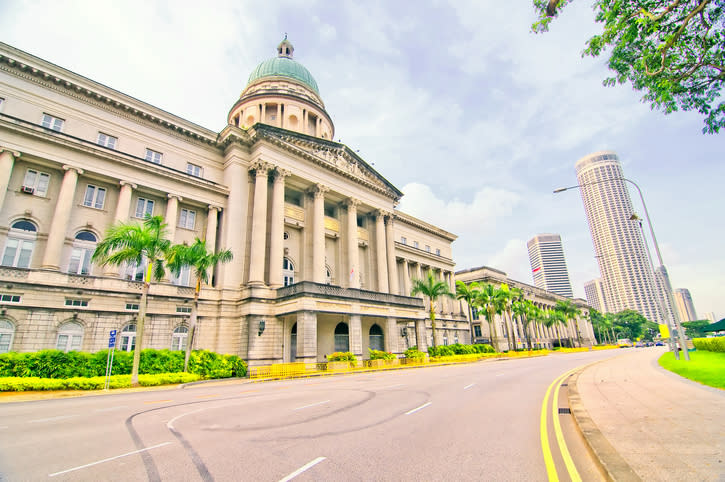Singapore as a debt restructuring hub: insolvency laws and bankruptcy protection

Recently, we talked about Singapore ship arrest laws and procedures as well as their practical effect in light of Hanjin Shipping Co. Ltd’s recent financial troubles. That article also mentioned that Hanjin had filed for bankruptcy protection, which has given some relief from their monetary woes.
But how does bankruptcy protection really benefit Hanjin? Is similar protection available in Singapore?
Bankruptcy protection for Hanjin outside Singapore
On 31 August 2016, Hanjin filed an application for rehabilitation proceedings to the Korean Bankruptcy Court and obtained temporary orders from the court to preserve Hanjin’s assets.
The very next day the Korean Court granted the order for the commencement of the rehabilitation procedure (the Korean Proceedings). Essentially, this resulted in the prevention of new or the continuation of legal proceedings against Hanjin and that it was given time to restructure its affairs to continue its business and/or pay its creditors.
As its assets are spread globally and subject to local jurisdictions, Hanjin applied for further protection in other countries such as the United States, the United Kingdom and Japan.
Hanjin and Singapore's insolvency laws

Source: Thinkstock/Getty Images
In the case, titled “Re Taisoo Suk (as foreign representative of Hanjin Shipping Co Ltd) [2016] SGHC 195”, the Singapore High Court had to decide Hanjin’s similar application for a recognition of the Korean Proceedings and a restraint of legal proceedings against it assets (including the restraint of the arrest of its vessels).
In coming to his decision the Honourable Judicial Commissioner Aedit Abdullah noted that the bankruptcy protection accorded to Hanjin in the US and the UK was based on the UNCITRAL Model Law on Cross-Border Insolvency (20 May 1997), which both jurisdictions had formally adopted.
As there were no specific Singapore laws on this issue (such as Chapter 15 of the US Bankruptcy Code, under which Hanjin had filed for protection in the US) in Re Taisoo Suk, Hanjin had to persuade the Singapore High Court to use their “inherent powers” to grant the orders sought.
JC Abdullah examined the court’s legislated powers closely together with a few local and foreign cases. His Honour decided, rightly so in my opinion, that Hanjin was entitled to the protection sought.
His Honour’s view that it was right to recognise and assist foreign rehabilitation proceedings if those proceedings would be unfair to the creditors as a whole, or which would facilitate the orderly rehabilitation of the company.
Interestingly, JC Abdullah was also of the view that the Court’s inherent powers would not be curtailed by the High Court’s admiralty jurisdiction. It was argued that the Court’s inherent powers could not be exercised to restrain the arrest of ships which was instead subject to the Court’s admiralty jurisdiction.
However, JC Abdullah decided that there was nothing in the legislation or subsidiary rules to exclude the Court’s general powers over admiralty processes.
Re Taisoo Suk was due (at the time of the decision) to be fixed for a further hearing to canvas more arguments from competing parties.
Hard truth: Insolvency makes big bucks

Source: Thinkstock/Getty Images
However, the case of Re Taisoo Suk brought Singapore’s insolvency laws (or their insufficiency) into sharp relief.
For example, in Singapore there is no automatic stay on legal proceedings once a company decides to apply for an order for a scheme of arrangement, which is similar to the Korean Proceedings.
Also, there is no formal adoption or amalgamation of the Model Law in the legislation, or a framework to deal with cross-border insolvency.
Why is this a problem? While the idea is not immediately intuitive, trying to save insolvent companies, especially in cross-border examples, is big business.
Other than the company itself, many other interested parties stand to benefit such as lawyers, accountants, restructuring specialists and even the courts.
Other than changes to the legislation itself, plans are afoot to setup a specialist court dealing exclusively with insolvency-related cases. This factor alone could be key in steering distressed companies to Singapore to seek help.
As such, if this new legislation had been in place much earlier, perhaps there was more that Hanjin could do in Singapore, other than seek protection.
It was reported in July this year that it was likely that the new legislation, an Omnibus Insolvency Act, to strengthen the insolvency legal framework will be presented to the Singapore Parliament within the next six to nine months.
With sweeping changes to Singapore’s insolvency laws imminent, it could be wise for struggling companies (Singaporean or otherwise) to wait and see whether these new laws would provide them the best protection in times of commercial peril.
(By Amirul Hairi)
Related Articles
- A game of battleship: the fall of the Hanjin Shipping empire
- Total Debt Servicing Ratio Tweaked, Now What?
- Serious debt problem: 4 Key Q&As to immediately help you out

 Yahoo Finance
Yahoo Finance 